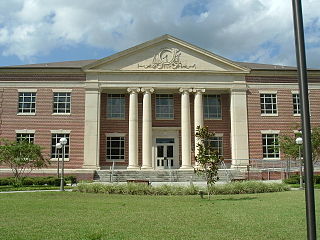
Baker County is a county in the U.S. state of Florida. As of the 2020 census, the population was 28,259. Its county seat is Macclenny. The county was founded in 1861 and is named for James McNair Baker, a judge and Confederate Senator.

Columbia County is a county located in the north central portion of the U.S. state of Florida. As of the 2020 census, the population was 69,698, up from 67,531 at the 2010 census. Its county seat is Lake City.

Inverness is a city and the county seat of Citrus County, Florida, United States. It is near the 10,950-acre (4,430 ha) Flying Eagle Preserve. As of the 2020 census, the population was 7,543, up from 7,210 at the 2010 census. It is part of the Homosassa Springs, Florida Metropolitan Statistical Area.

Middleburg is an unincorporated area and census-designated place (CDP) within Clay County in the U.S. state of Florida, located 26 miles (42 km) southwest of downtown Jacksonville and 16 miles (26 km) northwest of Green Cove Springs, the county seat of Clay County. As of the 2020 census, the population of Middleburg was 12,881, down from 13,008 at the 2010 census. It is part of the Jacksonville, Florida Metropolitan Statistical Area.
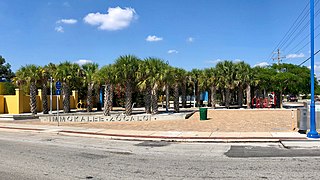
Immokalee is an unincorporated community and census-designated place in Collier County, Florida, United States. The population was 24,557 at the 2020 census, up from 24,154 at the 2010 census. It is part of the Naples–Marco Island metropolitan area.
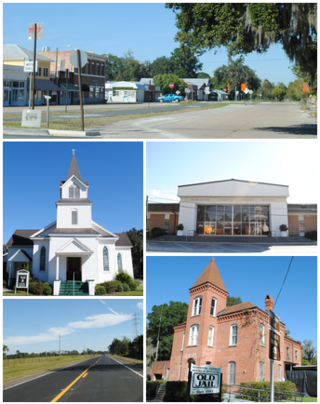
Jasper is a city and the county seat of Hamilton County, Florida, United States. The population was 4,546 at the 2020 census.

Fort Myers is a city in and the county seat of Lee County, Florida, United States. As of the 2020 census, the population was 86,395; it was estimated to have grown to 95,949 in 2022, making it the 25th-most populous city in Florida. Together with the larger and more residential city of Cape Coral, it anchors the Cape Coral–Fort Myers metropolitan statistical area, which encompasses Lee County and has a population of 834,573 as of 2023.

Greenville is a town in Madison County, Florida, United States. The population was 746 at the 2020 census, down from 843 at the 2010 census.
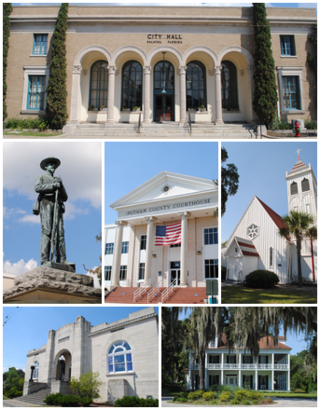
Palatka is a city in and the county seat of Putnam County, Florida, United States. Palatka is the principal city of the Palatka Micropolitan Statistical Area, which is home to 72,893 residents. The Palatka micropolitan area is included in the Jacksonville—Kingsland–Palatka, FL-GA Combined Statistical Area.

Altamonte Springs is a suburban city in Central Florida in Seminole County, Florida, United States, which had a population of 46,231 at the 2020 United States Census. The city is in the northern suburbs of the Orlando–Kissimmee–Sanford Metropolitan Statistical Area, which the United States Census Bureau estimated had a population of 2,673,376 in 2020.
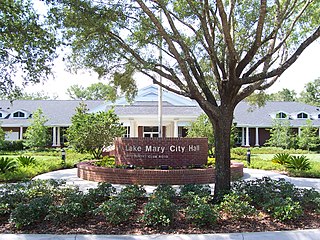
Lake Mary is a suburban city that is located in the Greater Orlando metropolitan area in Seminole County, Florida, United States, and is located in Central Florida. The population was 16,798 at the 2020 census.

Longwood is a city in Seminole County, Florida, United States. It is part of the Orlando–Kissimmee–Sanford, Florida Metropolitan Statistical Area. The population was 15,087 at the 2020 census.

Sanford is a city and the county seat of Seminole County, Florida. It is located in Central Florida and its population was 61,051 as of the 2020 census. It is part of the Orlando–Kissimmee–Sanford Metropolitan Statistical Area.
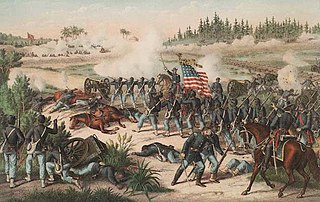
The Battle of Olustee or Battle of Ocean Pond was fought in Baker County, Florida on February 20, 1864, during the American Civil War. It was the largest battle fought in Florida during the war.
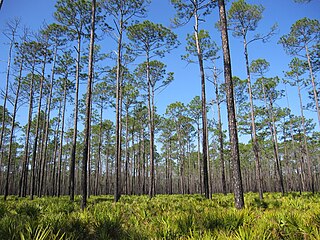
Osceola National Forest is a National Forest located in northeast Florida.

The city of Jacksonville, Florida, began to grow in the late 18th century as Cow Ford, settled by British colonists. Its major development occurred in the late nineteenth century, when it became a winter vacation destination for tourists from the North and Midwest. Its development was halted or slowed by the Great Fire of 1901, the Florida Land Bust of the 1920s, and the economic woes of the 1960s and 70s. Since the late 20th century, the city has experienced steady growth, with a new federal building constructed in downtown in 2003.

Olustee Battlefield Historic State Park is a Florida State Park in the Osceola National Forest, near the town of Olustee. The site of Florida's largest Civil War battle, the Battle of Olustee. The park is located 50 miles (80 km) west of Jacksonville and 15 miles (24 km) east of Lake City, on U.S. 90. It was one of the first parks in the Florida State Park system.

Florida participated in the American Civil War as a member of the Confederate States of America. It had been admitted to the United States as a slave state in 1845. In January 1861, Florida became the third Southern state to secede from the Union after the November 1860 presidential election victory of Abraham Lincoln. It was one of the initial seven slave states which formed the Confederacy on February 8, 1861, in advance of the American Civil War.
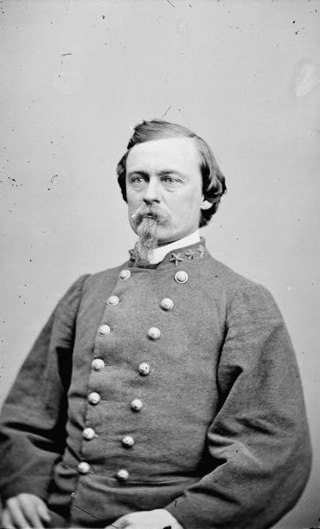
Joseph Finegan, sometimes Finnegan, was an American businessman and brigadier general for the Confederate States Army during the American Civil War. From 1862 to 1864 he commanded Confederate forces operating in Middle and East Florida, ultimately leading the Confederate victory at the Battle of Olustee, the state's only major battle. He subsequently led the Florida Brigade in the Army of Northern Virginia until near the end of the war.

Florida is a state in the Southeastern region of the United States. It borders the Gulf of Mexico to the west, Alabama to the northwest, Georgia to the north, the Atlantic Ocean to the east, and the Straits of Florida and Cuba to the south. About two-thirds of Florida occupies a peninsula between the Gulf of Mexico and the Atlantic Ocean. It has the longest coastline in the contiguous United States, spanning approximately 1,350 miles (2,170 km), not including its many barrier islands. It is the only state that borders both the Gulf of Mexico and the Atlantic Ocean. With a population of over 21 million, it is the third-most populous state in the United States and ranks eighth in population density as of 2020. Florida spans 65,758 square miles (170,310 km2), ranking 22nd in area among the states. The Miami metropolitan area, anchored by the cities of Miami, Fort Lauderdale, and West Palm Beach, is the state's largest metropolitan area, with a population of 6.138 million; the most populous city is Jacksonville. Florida's other major population centers include Tampa Bay, Orlando, Cape Coral, and the state capital of Tallahassee.




































